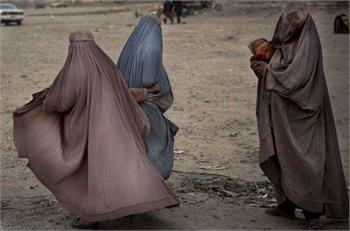 |
Taliban celebrates ‘freedom from the Canadians’ in farewell statement
 |
KABUL – A round of goodbye messages are following the last Canadian troops out the door in Afghanistan and some of them are rather nasty.
The Taliban’s information arm issued a statement Thursday to followers in Kandahar congratulating its fighters in the rural districts of Panjwaii, Zharey, Dand, Maiwand and Shah Wali Kot claiming that Canada has been defeated and has now fled the country.
“Your sacrifices have brought us freedom. The beacons of your blood have lit the way to independence. Celebrate the victory and freedom from the Canadians,” said the statement, written in Pashtu, but translated for The Canadian Press.
It said that the Canadians followed Holland, Denmark, Australian, Poland, and Spain in “retreat and failure.” Those nations have also begun withdrawing their forces from the International Security Assistance Force mission run by NATO.
The last of Canada’s training contingent of 100 soldiers formally ended the country’s 12 year military involvement on Wednesday and the release from insurgents was timed to coincide with that.
The statement named dead Taliban commanders, many of them killed by Canadians, and implored them to raise their heads from the grave to listen to the news.
The propaganda, although blatantly obvious and expected, is likely to have an impact in the isolated rural district villages where Canadian troops helped build schools, roads and provide security.
Aside from the attempt to stoke the Pashtun warrior mythology of expelling “foreigners,” the message also reinforces the long held belief among illiterate rural residents that outsiders are only around temporarily and that the Taliban are the only enduring presence.
“That Canada which came to Kandahar with dreams of colonization, these dreams have been shattered with our powerful explosions and iron-fist attacks. The Canadians who crossed the Atlantic are now retreating back to hide in their safe-havens,” said the statement.
“Today was the last day of this snake in this land and it has officially ended its occupation.”
However, a district elder and businessman in Panjwaii, Towfik Rafiqi, says the view of ordinary people in his area is that the Canadians were” tough and smart fighters,” who scared the Taliban and often forced them to hide.
People do recognize the Canadians came to help, he said.
The rural districts, where most of the fighting took place over Canada’s five-year combat mission, are somewhat quieter since the Americans took over in 2011, Rafiqi said.
But there have still been devastating attacks, including Wednesday’s assault on the city’s provincial intelligence headquarters compound by a group of suicide bombers. And, a senior Afghan government official said a roadside bomb in southern Helmand province on Thursday killed six civilians.
The fragile state of security, not only in Kandahar, but throughout Afghanistan was violently underscored on Tuesday with the execution style murder of a Swedish-British journalist in broad daylight on a street in Kabul’s mostly secure diplomatic quarter.
An extremist Taliban splinter group has claimed responsibility for killing Nils Horner, 51, as he spoke with his translator near a restaurant that was the scene of a devastating attack that killed eight 13 foreigners and eight Afghans in January.
The group Feday-e-Mahaz posted a statement on its website saying it targeted Horner because he was a spy for Britain’s MI-6 agency, not a journalist.
The group was created by loyalists of slain Taliban commander Mullah Dadullah, who orchestrated a vicious campaign of suicide bombings against Canadians in Kandahar during 2006-07. The organization broke with the Taliban following the announcement of talks with the United States.
The fractured, unpredictable security environment worries human rights groups, which say Afghan civilians will bear the brunt of the violence as international forces withdraw and the Afghan army and police take on more responsibility.
James Rodehaver, deputy director of the human rights unit at the United Nations assistance mission in Afghanistan, said his biggest worry is that local police and soldiers have the backing and know-how to not only dismantle roadside bombs and booby traps, but the ability to track the explosives back to their source networks.
A UN report released in February noted that civilian casualties rose by 14 per cent in 2013 when compared with the previous year, and a disproportionate number of those being killed were women and children.
Lt.-Col. Eric Boucher, one of the last Canadian trainers to leave, said he’s confident in the ability of the local Afghan police bomb disposal technicians to handle the job.
Their capability has been growing steadily.
“I was here in 2007 and there is no comparison,” he said. “They are going to have challenges…but they have the confidence” to do it themselves.
There is already one national forensic lab in Kabul dedicated to tracking the source of bombing-makers. Another one is slated to open in the western city of Herat later this year.
The Canadian Press
1099 page views
|
|
|
|